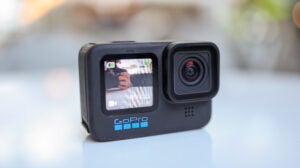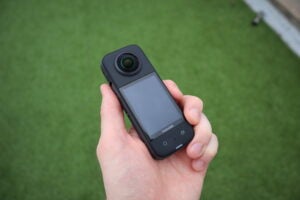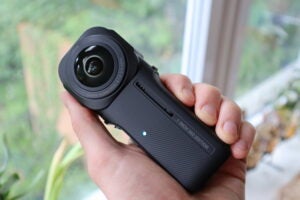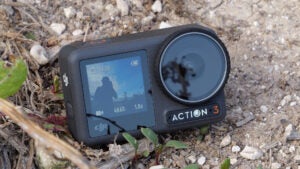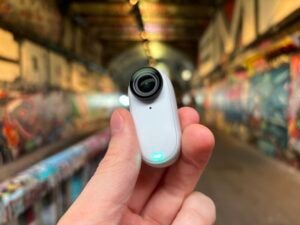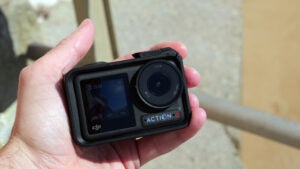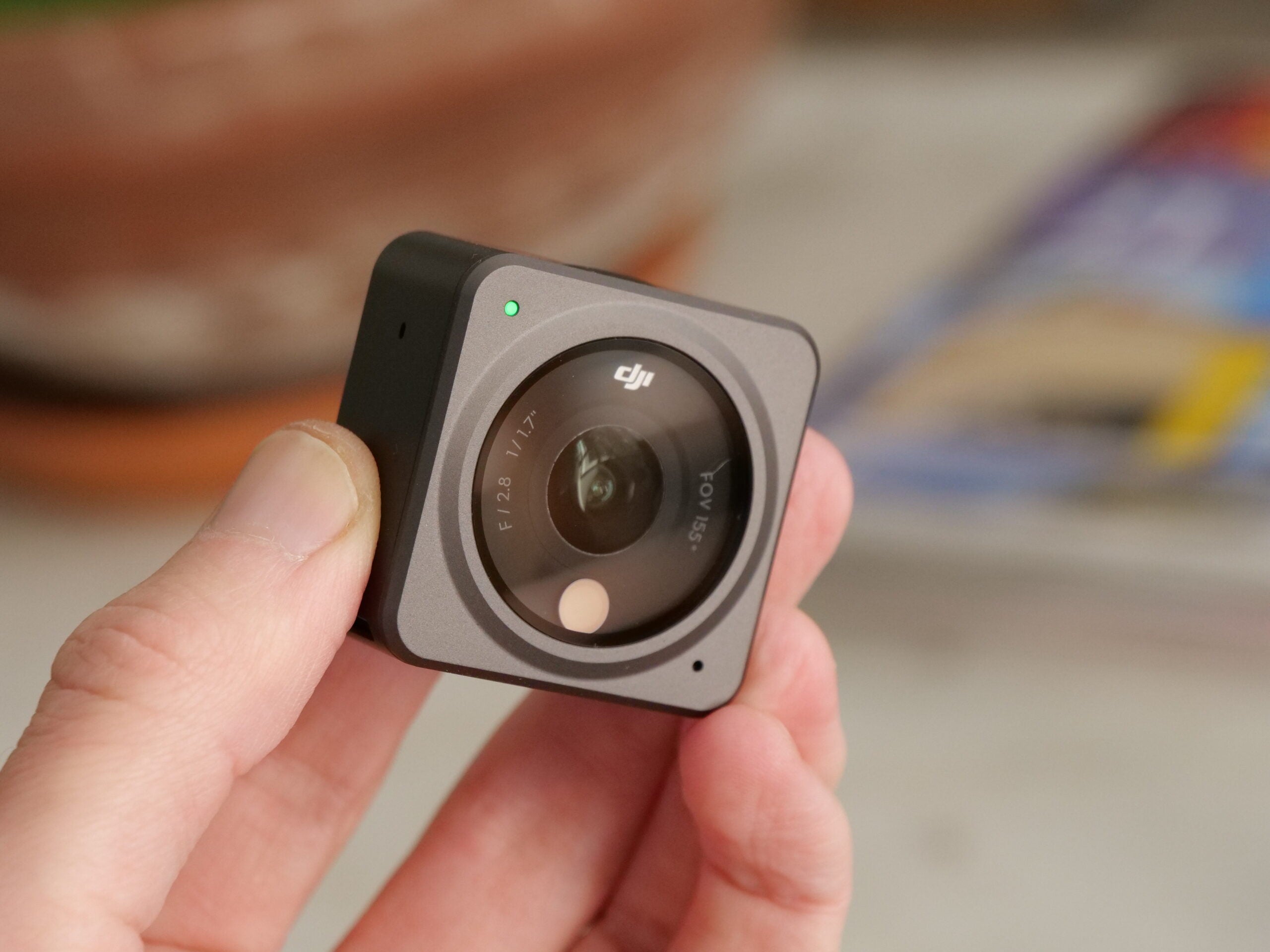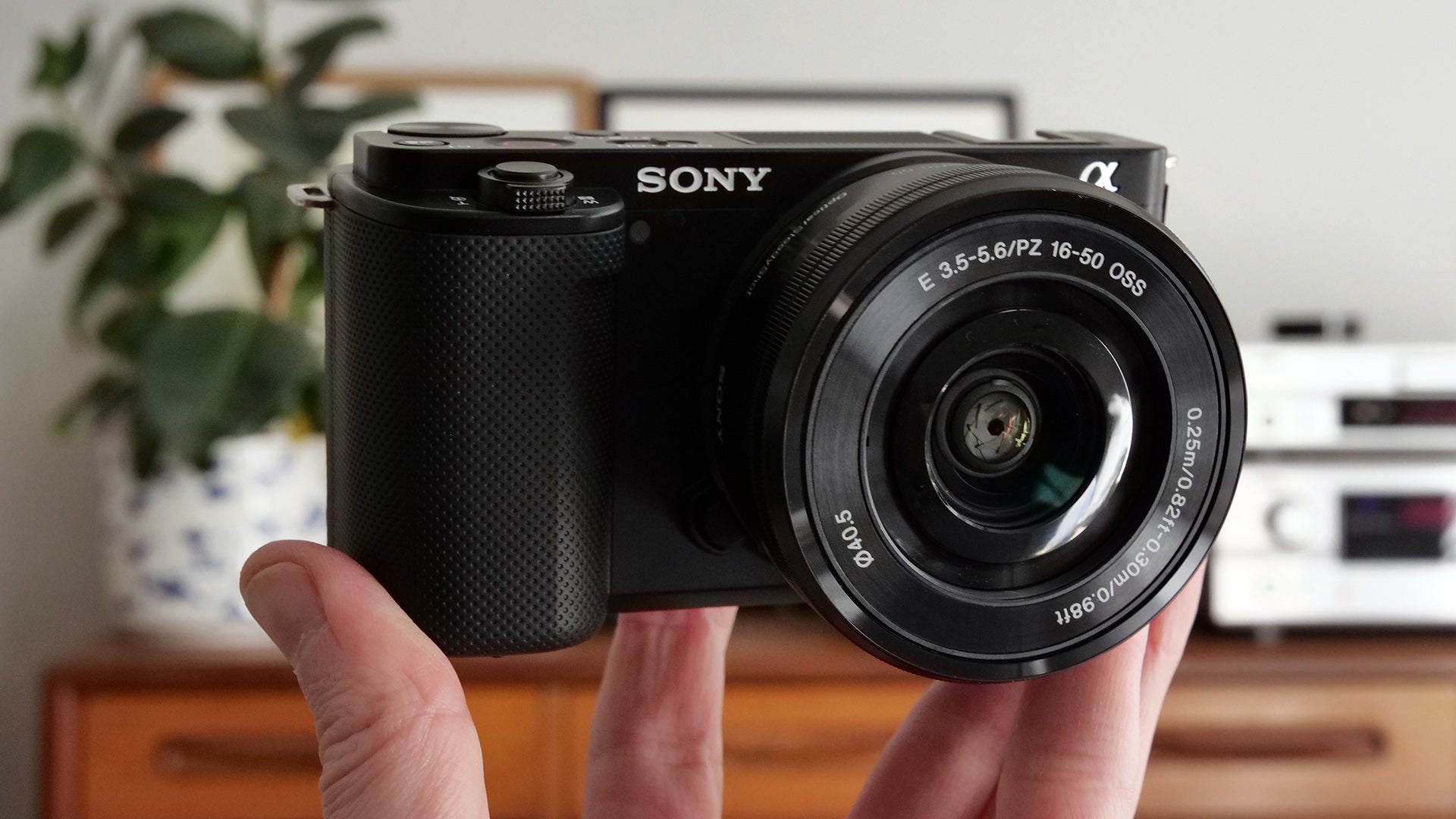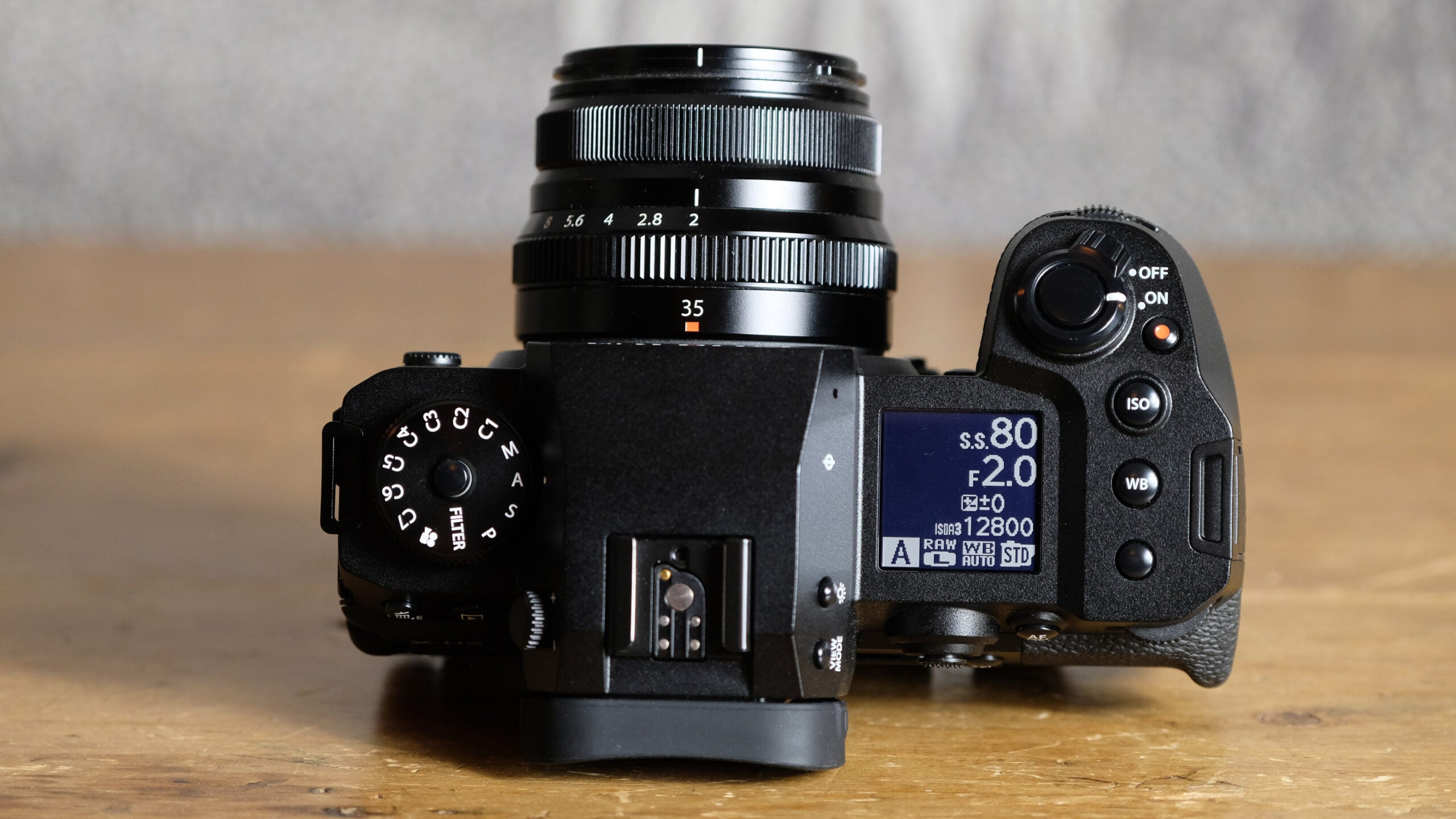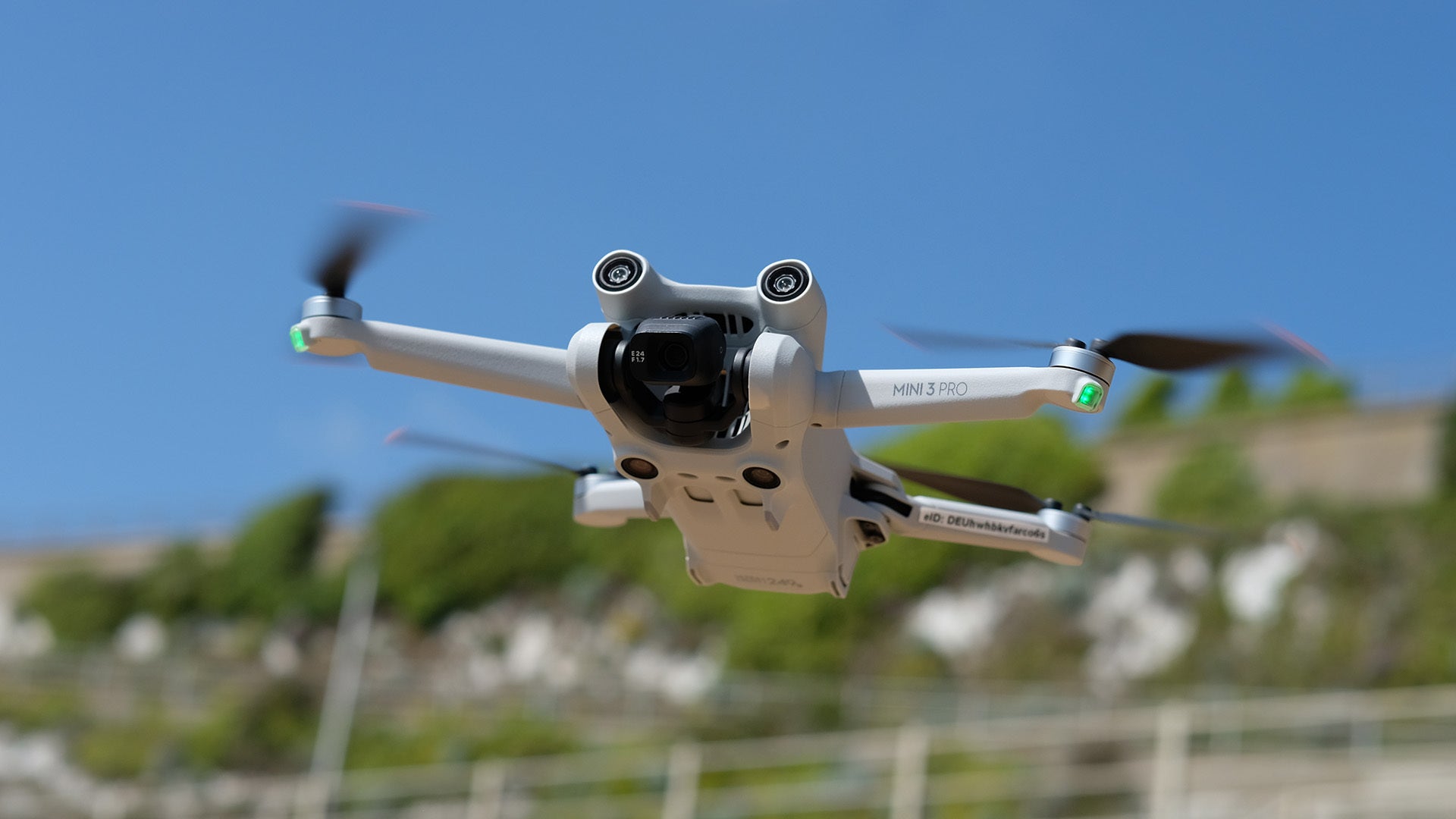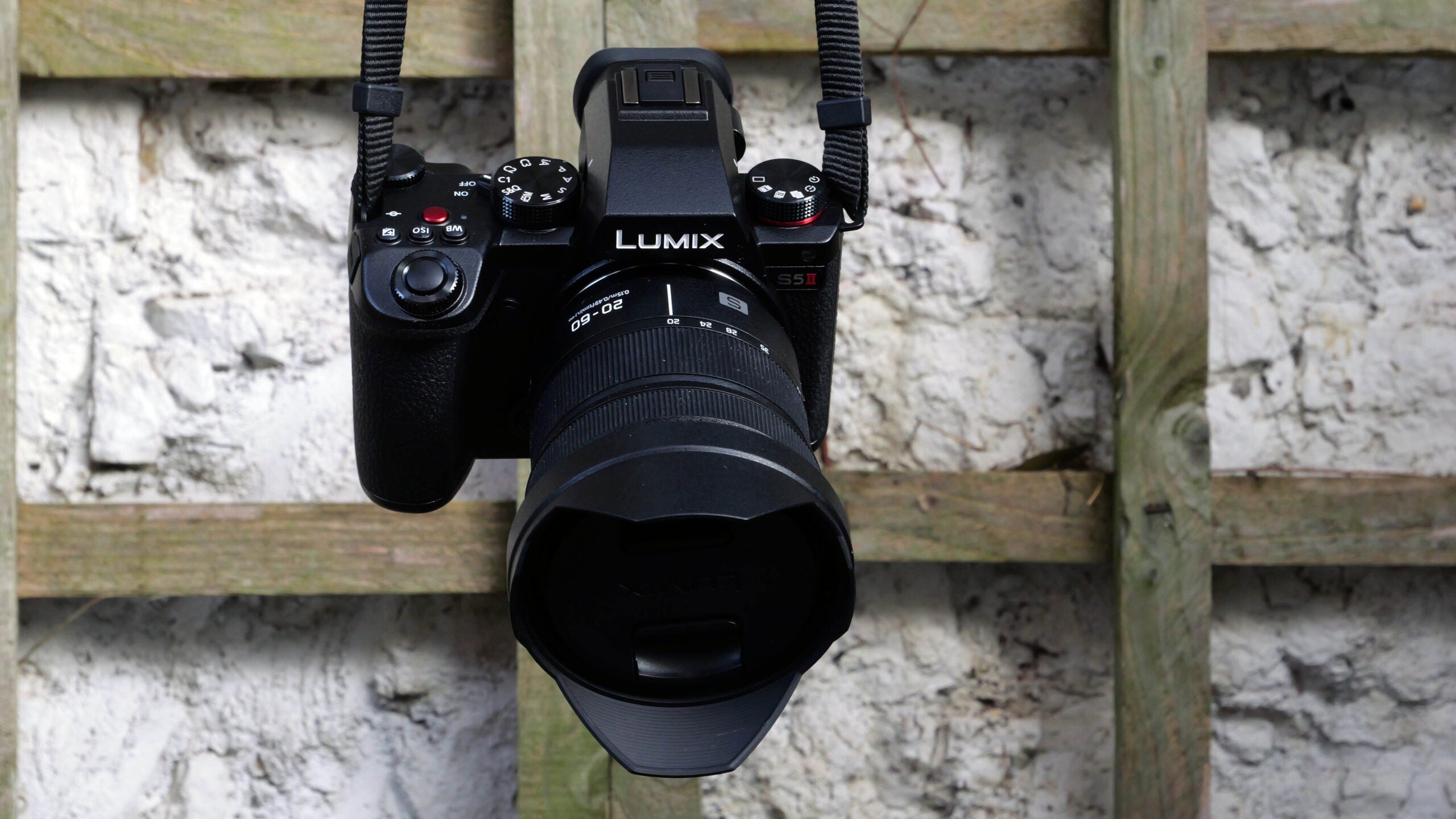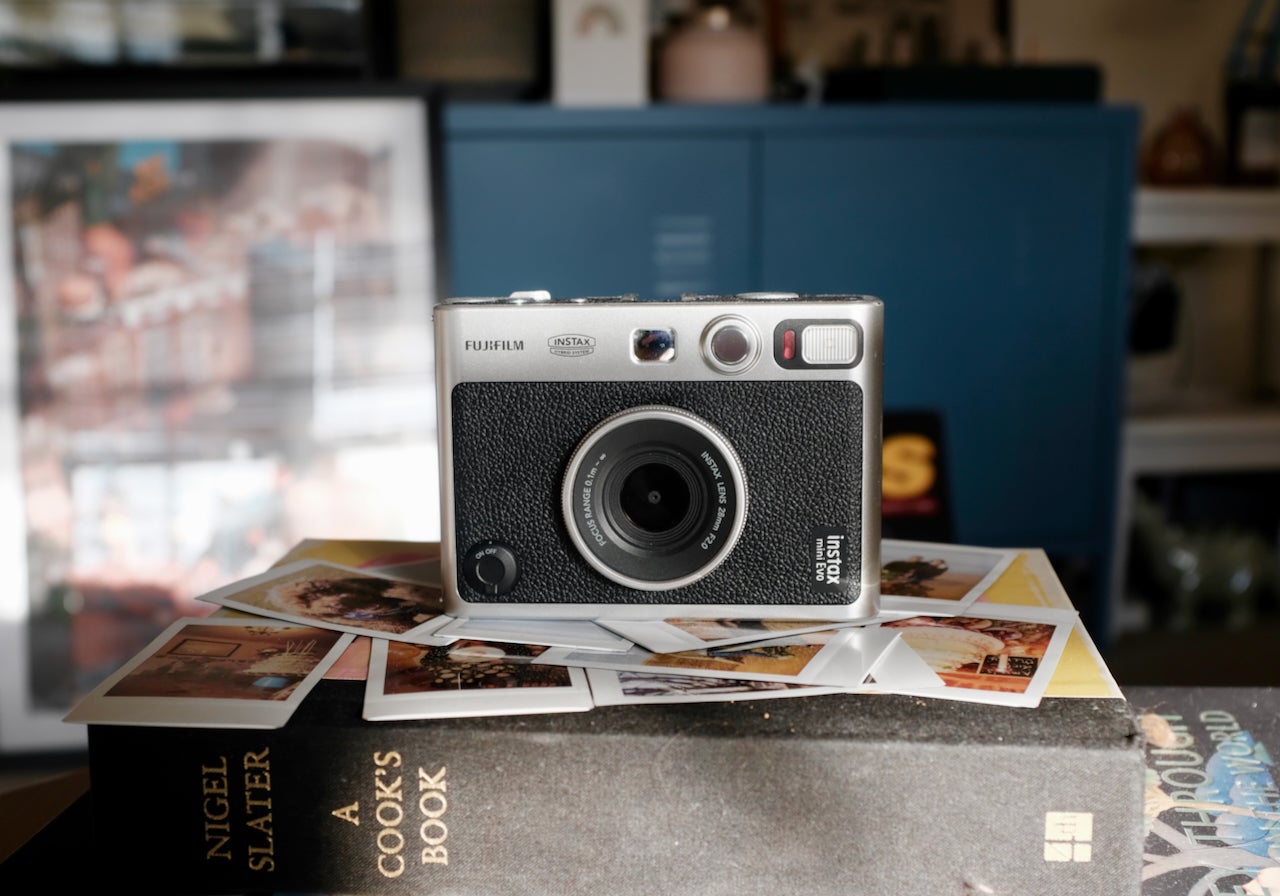Best Action Camera 2024: Capture more with these rugged cameras
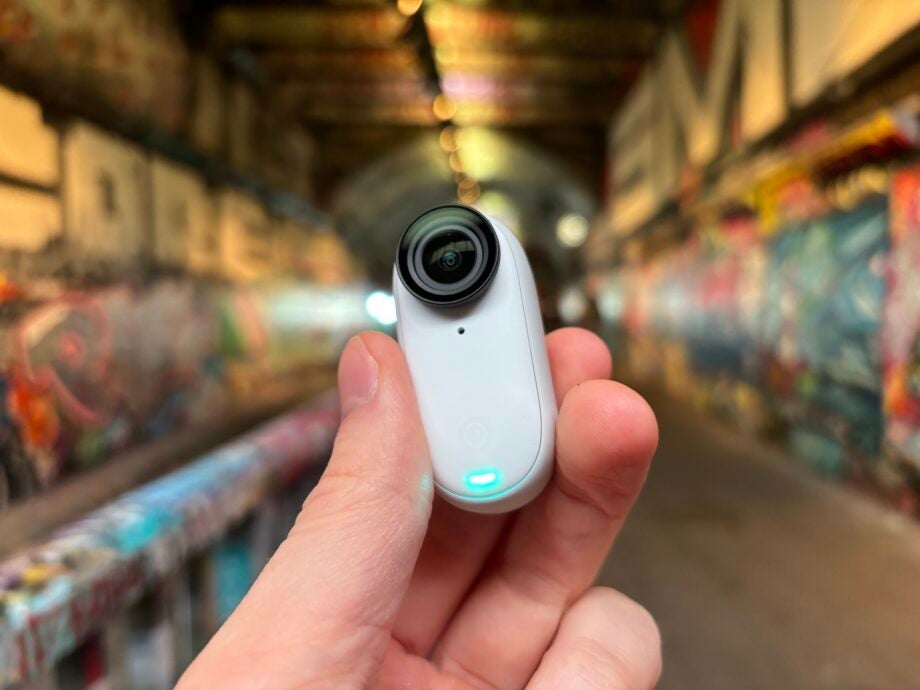
If you’re looking for a new action camera, the first company that comes to mind is probably GoPro. However, there are actually a few competing brands that specialise in these compact and rugged cameras. We’ve brought together all the best action cams that we’ve reviewed in this guide.
There are a number of qualities you’ll want to consider when choosing an action camera. First, you’ll want a camera that can withstand any extreme weather conditions or diving sessions that you plan to put it through. You’ll also want to think about battery life, as you definitely don’t want your camera dying in the middle of the action.
Of course, there’s also image quality to consider, including low-light performance. Many action cameras now make it easy to record in aspect ratios that fit the specifications of popular platforms like TikTok, Instagram and YouTube, so that’s definitely something to consider if you plan to share your adventures on social media.
Finally, a handful of the cameras in this best list are capable of recording 360 content. If you’re looking to capture large fields of view, you’ll want to pick up a camera with 360 capabilities.
If you’re looking for a more standard camera to record vlogs, make sure to check out our guide to the best vlogging cameras. We also have a range of other photography best lists, including the best cameras, best mirrorless cameras and best camera phones.
Best action cameras at a glance:
- Best overall action camera: GoPro Hero 11 Black – check price
- Most versatile action camera: Insta360 X3 – check price
- Best for 360: Insta360 One RS 1-inch 360 Edition – check price
- Best for underwater filming: DJI Osmo Action 3 – check price
- Best lightweight action camera: Insta360 Go 3 – check price
- Best for low light: DJI Osmo Action 4 – check price
How we test
We test every camera we review thoroughly. We use set tests to compare features properly and we use each entry as our main device over the review period. We’ll always tell you what we find and we never, ever, accept money to review a product.
- 8:7 sensor perfect for content creation
- A rich range of accessories
- Excellent dynamic range for an action camera
- Mediocre low-light performance
- Mounting doesn’t best DJI’s magnetic system
- Pricier than the main competiton
- New, larger touchscreen is a game changer
- Me Mode can obtain some really impressive shots
- Fast UI with easy to read menus and icons
- 360-degree and single lens footage looks incredible
- Single lens shooting still bested by GoPro, but only just
- Professionals will still want to use an external mic
- 6K 360-footage looks incredible
- A genuine competitor to the GoPro Max
- Cutting-edge stabilisation
- Easy editing in the Insta360 app
- Eye-watering price
- Screen-tearing evident when zooming in
- Better mounting system than GoPro
- Impressive 16m waterproof depth
- Excellent battery life
- Still overheats despite improvements
- Can’t match top-end GoPros for image quality
- Now shoots at 2.7K
- Vastly superior microphones
- No more overheating
- The Action Pod is great
- Low-light scenes are still too difficult
- Quite a hefty price bump
- GoPro-beating low-light performance
- High level of default waterproofing
- Effective, versatile image stabilisation
- GoPro Hero 11 still better in good lighting
- Have to physically rotate 90º for 9:16 content
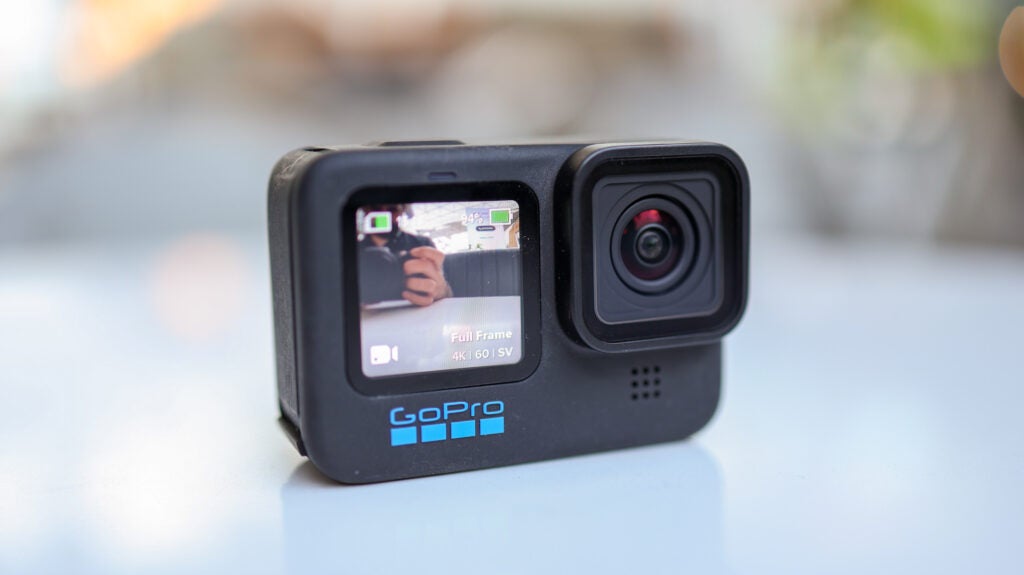
GoPro Hero 11 Black
Best overall
Pros
- 8:7 sensor perfect for content creation
- A rich range of accessories
- Excellent dynamic range for an action camera
Cons
- Mediocre low-light performance
- Mounting doesn’t best DJI’s magnetic system
- Pricier than the main competiton
The GoPro Hero 11 Black is the best action camera we’ve tested, combining impressive video quality, excellent features and best-in-class stabilisation.
The successor to the Hero 10 Black has the exact same dimensions as its predecessor and works with the same mods too.
Like the Hero 10, the Hero 11 Black also has two displays – a 2.27-inch touchscreen with a 5:3 aspect ratio on the back and a 1.4-inch display without touch capabilities on the front. If you’re looking for an action cam with a front touch display, you may want to check out the DJI Osmo Action 3.
The GoPro Hero 11 Black is also waterproof up to 10m, though the Osmo Action 3 has the GoPro beat in this area with an ability to dive up to 16m.
The Hero 11 Black is capable of recording up to 5.3K video and capturing up to 27-megapixel images with an 8:7 aspect ratio thanks to a new 1/1.9-inch sensor. Content creators can easily crop videos in the GoPro Quik iOS and Android apps, which is handy for sharing content on TikTok, Instagram and YouTube.
The camera is versatile too, allowing you to shoot 5.3K/30fps or 4K/60fps with the full 8:7 sensor, or 5.3K/60fps, 4K/120fps or 2.7K/240fps at 16:9.
There’s support for 360-degree horizon levelling in 5.3K with no mod necessary, as well as fantastic image stabilisation.
The battery lasts longer than that in previous GoPros and, when it comes to audio, volume levels are amplified to ensure everything is picked up. However, those who are serious about sound may want to pick up the Media Mod to add a mini boom mic to their action cam set-up.
Reviewer: Basil Kronfli
Full Review: GoPro Hero 11 Black
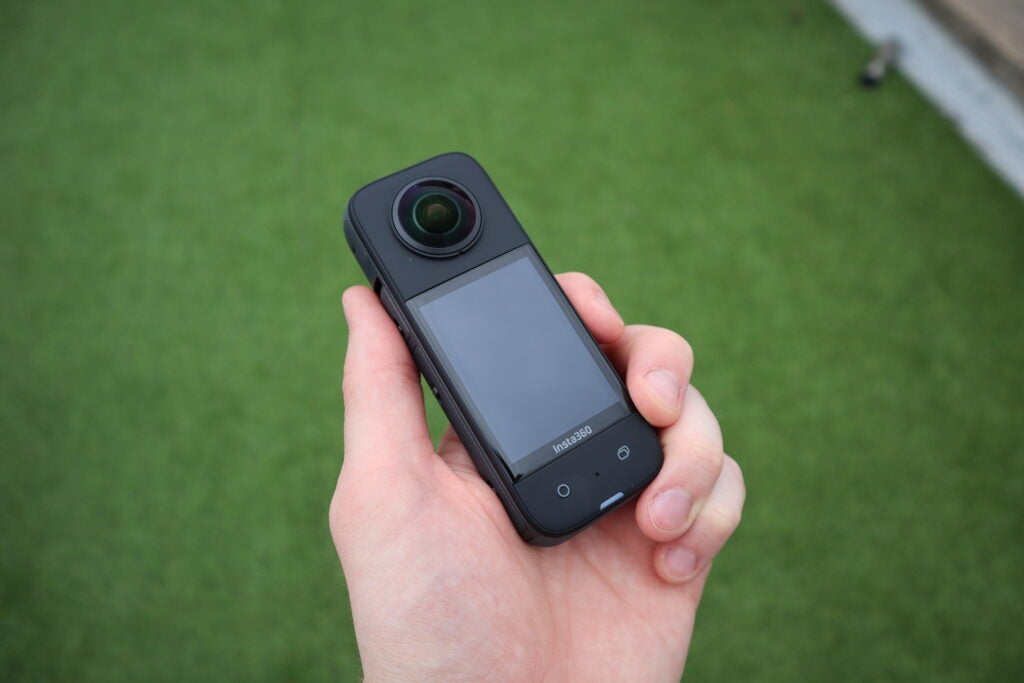
Insta360 X3
Most versatile action camera
Pros
- New, larger touchscreen is a game changer
- Me Mode can obtain some really impressive shots
- Fast UI with easy to read menus and icons
- 360-degree and single lens footage looks incredible
Cons
- Single lens shooting still bested by GoPro, but only just
- Professionals will still want to use an external mic
The Insta360 X3 is a dual-lens camera with a 360 mode, making it a versatile piece of kit for any vlogger looking to shoot VR-ready content.
The camera looks similar to the One X2 with a design that prioritises function over fashion and a texturised grip for handheld filming. The camera is a little thicker and heavier than its predecessor but it’s still very much pocket-sized.
The physical buttons have been given a redesign, making it faster to cycle between different modes and presets. The USB-C port is also easier to access, making the process of charging the action cam easier than it was on the One X2.
There’s a large and bright 2.29-inch vertical display, similar in size to the main touchscreen on the GoPro Hero 11, which we found to be a joy to use and a huge step up for Insta360’s cameras.
The UI has also been given a major upgrade to make use of the larger screen space, including bigger menu icons and faster performance, though not quite as rapid as that on the GoPro.
There are new 1.2-inch sensors, which capture the same 5.7K 360 and 4K single-lens footage as its predecessor but with the ability to let in more light. We found this allowed for more vibrant and colourful shots.
Along with standard capture, stills and Loop Recording, there’s also ‘Me Mode’. This allows you to position the Insta360 X3 a distance in front of you and have the device capture images from both cameras, merging them together to create a drone-like effect.
There are four mics for recording stereo sound, along with decent stabilisation and a much larger battery compared to the X2, offering over 80 minutes of 5.7K 360 footage from one charge.
Reviewer: Thomas Deehan
Full Review: Insta360 X3

Insta360 One RS 1-inch 360 Edition
Best for 360
Pros
- 6K 360-footage looks incredible
- A genuine competitor to the GoPro Max
- Cutting-edge stabilisation
- Easy editing in the Insta360 app
Cons
- Eye-watering price
- Screen-tearing evident when zooming in
The Insta360 One RS 1-inch 360 Edition is the best action camera for 360 filming, combining 6K resolution and near-flawless stabilisation.
The action camera looks more like the Insta360 X3 than the One RS that came before it. Gone is the red battery pack and the horizontal design, and the buttons can now be found on the side of the camera. The 1.5-inch screen is quite small compared to that of competitors, such as the GoPro Hero 11 Black.
The battery also has a larger capacity than the vertical one found in the Insta360 One R, meaning it annoyingly isn’t compatible with the newer camera despite the two batteries being the same size. The camera can also get quite hot, which is something to consider during longer filming sessions, such as when capturing time-lapses.
The Insta360 One RS 360 Edition is capable of recording up to 6K footage, putting the camera in line with the GoPro Max when it comes to video quality. We found footage captured with this camera to be vibrant with greens that pop and plenty of bright blues.
The mic boasts excellent quality too, with voices picked up clearly even on windy days. There’s also a separate mic adapter available for those looking to attach a more professional set-up.
The Insta360 app and Insta360 Studio make editing footage less daunting, even for newbies, with features like Snap mode making it easy to change the angle and zoom level during playback. This allows you to set a route for the viewers’ perspective or choose a specific subject for the video to follow.
Image stabilisation is also next-level, improving upon the FlowState stabilisation found on the One RS.
If you can stomach the high price of the Insta One RS 1-inch 360 Edition, you’ll struggle to find a better 360 action camera.
Reviewer: Thomas Deehan
Full Review: Insta360 One RS 360 Edition
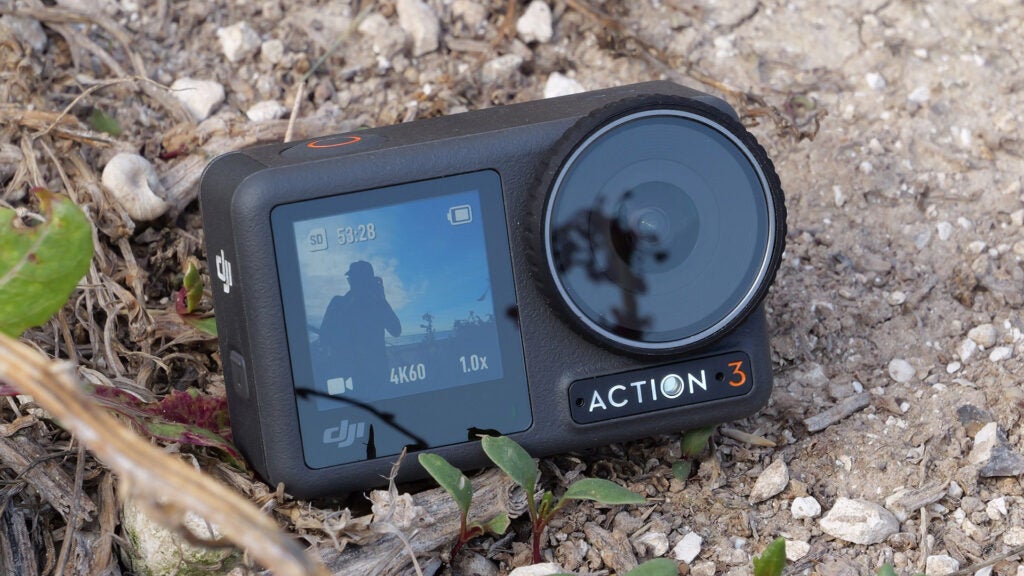
DJI Osmo Action 3
Best for underwater filming
Pros
- Better mounting system than GoPro
- Impressive 16m waterproof depth
- Excellent battery life
Cons
- Still overheats despite improvements
- Can’t match top-end GoPros for image quality
The DJI Osmo Action 3 is an excellent choice for underwater filming and a great action camera in its own right, bested only by the GoPro Hero 11 Black.
DJI has switched out the modular design it debuted on the Action 2 in favour of a more standard GoPro-esque action camera template. However, DJI hasn’t completely ditched the old design, keeping the magnetic clamp and using it to create a fantastic quick-release system for attaching the camera to first and third-party mounts.
This means you can unclip the camera from mounts instead of unscrewing it as you might with a GoPro, making it much faster to change. There’s even a second mag-lock mounting point on the side of the protective case for easy filming in portrait orientations for TikTok or Instagram Reels.
Even without the case, the Osmo Action 3 is capable of surviving drops of up to 1.5m and water as deep as 16m. This depth extends to 60m when used with the optional waterproof case. You can also replace the lens so if it does get damaged, there’s no need to replace the entire camera.
Both the 1.4-inch front and the 2.25-inch rear screens are touch-capable, which puts DJI one step ahead of GoPro when comparing the two front displays. Physical buttons are limited to one large shutter button and a power/quick select button for cycling through modes which we found lacked a bit of travel.
When it comes to video quality, the Osmo Action 3 is capable of capturing 4K video at 120fps, meaning there’s no 5.3K option like the one found on the GoPro Hero 11 Black. However, the FOV is wider at 155-degrees.
We found footage to be sharp, detailed and well-exposed during the day, though the quality did fall off in trickier lighting conditions, with images and videos suffering in low-light environments.
Image stabilisation is extremely impressive, but both the stabilisation and horizon levelling features do come with a crop. Likewise, 360-degree horizon levelling is also only supported when recording at 2.7K or lower, which is a pretty dramatic difference next to the GoPro Hero 11 Black’s 5.3K 360-degree horizon levelling support.
Despite these caveats, the DJI Osmo Action 3 remains a rugged and very affordable action camera.
Reviewer: Sam Kieldsen
Full Review: DJI Osmo Action 3

Insta360 Go 3
Best lightweight action camera
Pros
- Now shoots at 2.7K
- Vastly superior microphones
- No more overheating
- The Action Pod is great
Cons
- Low-light scenes are still too difficult
- Quite a hefty price bump
Action cameras are already pretty small but the Insta360 Go 3 takes it to a whole other level. This thumb-sized camera weighs just 35g by itself which not only makes it unbelievably portable, but also incredibly versatile in terms of the accessories that you can pair it with.
For instance, if you want to shoot some POV footage you can insert the Go 3 into a clip that can then be attached to a cap, or you can pair it with a magnetic necklace to shoot a hands-free hyper-lapse. For any entry level content creators who want a vlogging camera to match their creativity, the Insta360 Go 3 is easily one of the best options out there.
The Go 3 is also a considerable leap over its predecessor, taking more meaningful steps to compete with more fully fledged options from GoPro and DJI. The Go 3 achieves this via the new Action Pod which turns the Go 3 into a more traditional camera.
When housed in the Action Pod, you can use the oscillating display to see exactly what you’re filming, regardless of which side of the camera you’re on, which means that unlike the Go 2, you can shoot to-camera footage in a pinch and know exactly where you are within the frame.
There’s also a bump in recording quality as the Go 3 can now record footage at up to 2.7K. For any professional content creators who want a higher resolution, the Go 3 doesn’t come close to the more detailed footage offered by the GoPro Hero 11 and even the Insta360 Ace Pro, but for everyone else, it can do the job just fine.
Insta360 has also endeavoured to add an extra mic to the Go 3 and it made a huge difference when we tested the audio quality out in public. Even when filming in a loud and busy crowd, the Go 3 was still able to hone in on the subject’s voice without any need for editing, and given just how easy it is to chuck the Go 3 into a pocket or a camera bag, it’s a great starting camera for most people.
Reviewer: Thomas Deehan
Full Review: Insta360 Go 3

DJI Osmo Action 4
Best for low light
Pros
- GoPro-beating low-light performance
- High level of default waterproofing
- Effective, versatile image stabilisation
Cons
- GoPro Hero 11 still better in good lighting
- Have to physically rotate 90º for 9:16 content
The DJI Osmo Action 4 is our favourite action camera for shooting in low light and a worthy alternative to the GoPro Hero 11 Black.
We love the 2022 GoPro, but low light performance has never been the camera’s strong suit. This is where DJI steps in with its large 1/1.3-inch CMOS sensor and 4K resolution promising better performance in low lighting and a higher level of waterproofing out of the box.
The new sensor is bigger than both the 1/1.9-inch sensor in the Hero 11 Black and the 1/1.7-inch one in the Osmo Action 3. Larger pixels allow the sensor to take in more light, making the Action 4 a stronger choice for capturing evening and late-night adventures where you can’t rely on daylight to get a clear shot. That said, if you do shoot primarily in daylight, the Hero 11 Black does offer more punchy and detailed 5.3K videos.
Visually, the Osmo Action 4 looks identical to the Action 3 with the same dual touchscreens, top-mounted shutter button and Horizontal-Vertical Protective Frame which allows users to quickly switch between orientations for shooting TikToks and Reels. This isn’t as elegant as GoPro’s method for shooting vertically but it’s a good solution nonetheless.
The Action 4 does have the GoPro and the Action 3 beat on waterproofing, allowing you to plunge the camera up to 18m with no additional protection.
Upgrades that arrived with this generation of the Osmo Action include support for larger 512GB microSD cards and improved image stabilisation with Rocksteady 3.0+. However, battery life, connectivity, screen resolution and shutter speed remain unchanged from the previous generation.
The Action 4 includes several forms of electronic image stabilisation that give GoPro a run for its money, along with HorizonSteady which helps to ensure the frame remains level with the horizon up to 45-degrees.
Reviewer: Sam Kieldsen
Full Review: DJI Osmo Action 4
We also considered…
We’ve reviewed
See all reviewsFAQs
Horizon levelling keeps your shot lined up with the horizon no matter which angle you tilt the device at, which is very handy for assisting in stabilisation.


